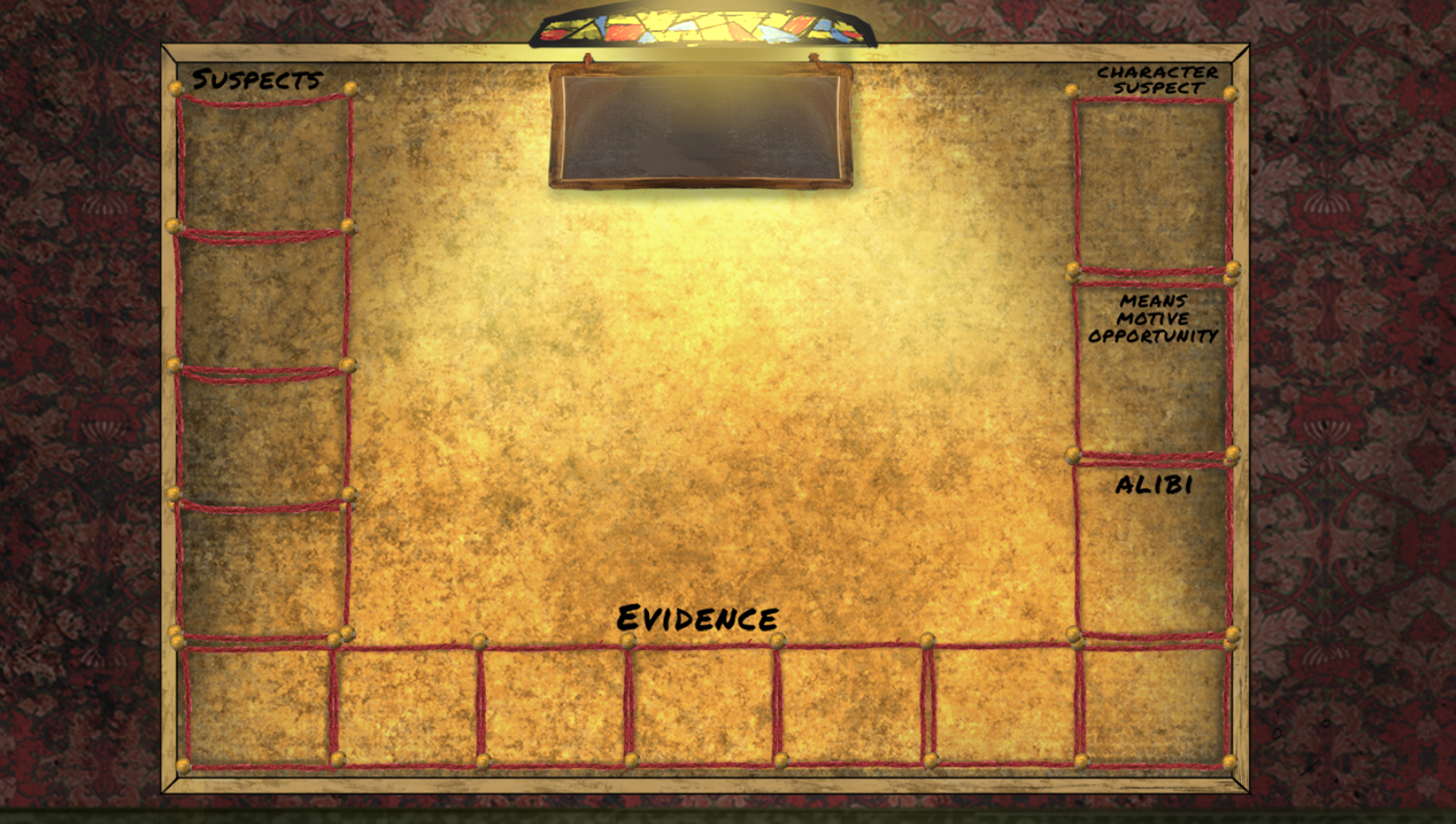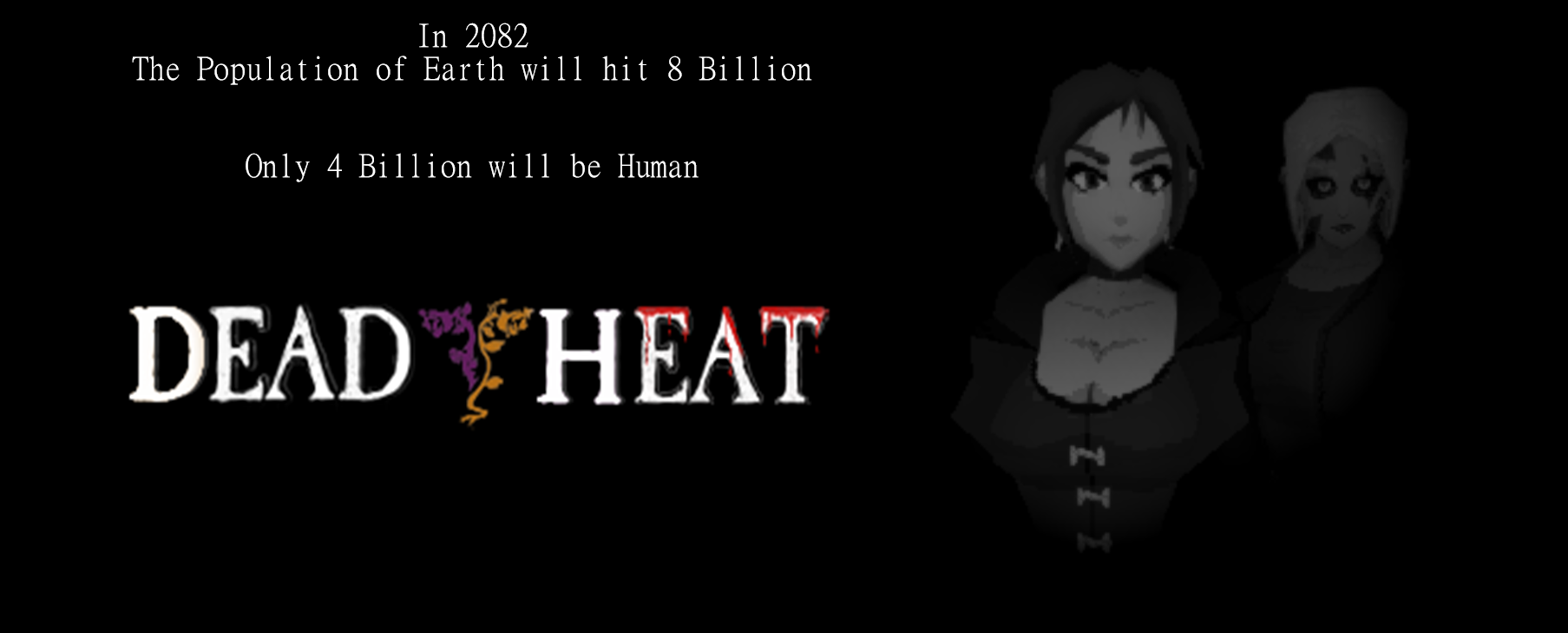A Case for the Board
Hello Everyone. Welcome to our Sunday devlog.
This week has been very important to the project as this is where we lay the groundwork for the evidence analysis system. One of the four core mechanics of Dead Heat, allowing the player to progress through the game with their own case they have built. In this devlog, I will introduce the evidence board and case building in more detail, so you can see how the system will be used in-game and how we will go about building it.

When we first designed the board. We wanted to make sure that the player had as much freedom in designing their own "case web" as possible, without feeling lost. Like the rest of the games design philosophy; the board will offer all the tools you need to build a case, but without holding your hand throughout. Of course, there will be a tutorial on how to use the board in-game, but the player will have full control over how the case is structured, and what evidence is used on the web.
The source for this idea came from playing LA Noire many moons back. The game is one of my favourites, no doubt. But the way evidence and case building was handled was not my favourite aspect of the game. It seems very arbitrary and in many instances, binary. The game gave you a large amount of evidence to analyse and work with, but there was always one or two correct answers.
Cases in real life aren't as cut and dry. There is always an element of doubt and uncertainty about the case. Is this really what happened? Does the evidence really point to this? Is there something we missed? More so, the job of a detective is not only to find the truth but to build a case credible enough to pass a jury.
I let the idea stew a while in my head. This element of doubt works well with Dead Heat's overall feeling of paranoia, as well as providing a great way of making the player feel like a detective while progressing through the game. Creating their very own case webs that they've seen all throughout Noir & Crime Fiction stories across media. The most important test for the system was to work well with the other core mechanics.
Does it work well with the dialogue? The dialogue will provide you with verbal evidence or recorded evidence if using interrogation mode.
Does it work well with time? There will be two boards in the game. One of these boards will be inside the player's apartment; a location that will always be available to the player. Using the board will freeze time, so the player can take their time in analysing their next move and what they need to build their case.
Does it work well with the randomisation? The player will gather and create evidence themselves through picking up items and using the camera/scanner. The randomisation of evidence will impact what combinations the player can make, but not in a negative way. In fact, it will have a positive effect on making each playthrough a unique experience.
With these bases covered. I got to work designing the layout of the board.

I am not an artist, as you can see. Rectangles are all I can do. Our artist, Steve, was able to take these shapes and turn them into something that looked a lot more like what we wanted.
The different sections would house all that the player needed to build their case. With the list of suspects on the left in red, the evidence they had collected up to that point below in green, and the right-hand side would be information output with the currently designated "prime" suspect shown in the yellow cell, the case info in the blue cell; listing the status of the case means, motive and opportunity; of which all three will need to be proven before a case can be completed. The orange will house all collected alibi's of the suspects to cross-reference with evidence.
Everything the player needs to build a case comfortably is on screen. Now, for making interaction just as comfortable. Dragging and dropping evidence onto the central workspace is done with the left mouse button. Drawing a string from one photo to another to connect them is done with the right mouse button. Hovering over the evidence and pressing the space bar will bring up a closeup of the evidence, showing you the details and credibility of the evidence in the web. The player will be able to mark different branches as one of the MMO criteria needed to make a complete case.
The credibility of the evidence will change depending on where in the web structure it is. If the evidence is in a branch marked Me (Means) then the evidence credibility will be affected by that.
How evidence effects the overall case credibility can be explained by this formula. The value a piece of evidence adds to the case's credibility is the sum of the evidence's context divided by its credibility rating relative to the context it is presented in.
Simply put, does it make sense to use it there?
Does a matchbook really tell you much about who killed that man?
Does it prove your prime suspect was able to kill this man at this time? If not, then it will not have a high value in opportunity.
Our aim is to ensure carefully put together cases will have a positive(ish) outcome while sloppily put together cases will have a negative(ish) outcome.
The system will be going through numerous prototypes and iterations next week to refine the rough edges and ensure it works fair. There is a lot that can go wrong with a system like this, so we will test it with as many different values and conditions as we can so it will always work in a random environment.
Thank you for reading! This has been one of the more long-winded devlogs, but this mechanic is one that we are very excited to be working on. If you like what you see here and want to support the project, please check out our patreon! If you don't want to donate, please follow us on Twitter @saxonbristol.
Get Dead Heat
Dead Heat
A Post-Zombie Gothic Noir Adventure Game
| Status | In development |
| Author | Saxon Software |
| Genre | Adventure |
| Tags | Cyberpunk, Female Protagonist, Horror, Multiple Endings, Mystery, Noir, non-eucledian, Story Rich, Zombies |
| Languages | English |
| Accessibility | Subtitles |
More posts
- Bug fix for Dead Heat Winter Build: 21-1-24Jan 21, 2024
- January update 15-1-24Jan 15, 2024
- Winter Build 2023: Foundation ImprovementsDec 25, 2023
- Dead Heat: Spring Build 29-3-23Mar 29, 2023
- Bug fix for Dead Heat: Winter Build 26-2-2023Feb 26, 2023
- Bug fix for Dead Heat: Winter Build 20-2-2023Feb 20, 2023
- It's been a long time.Mar 13, 2022
- Neon NoirFeb 15, 2021
- Close to the finish line.Jan 24, 2021

Leave a comment
Log in with itch.io to leave a comment.